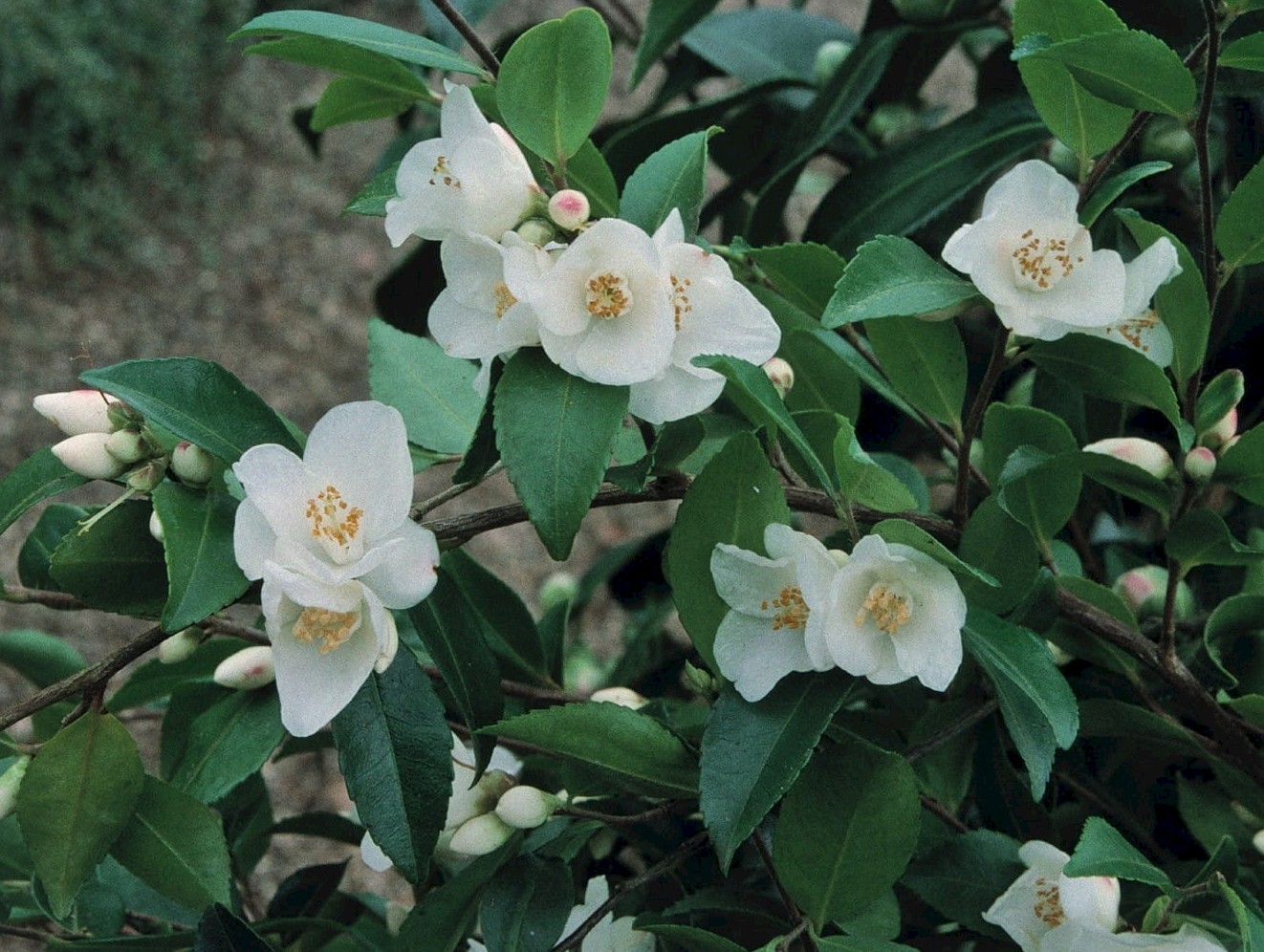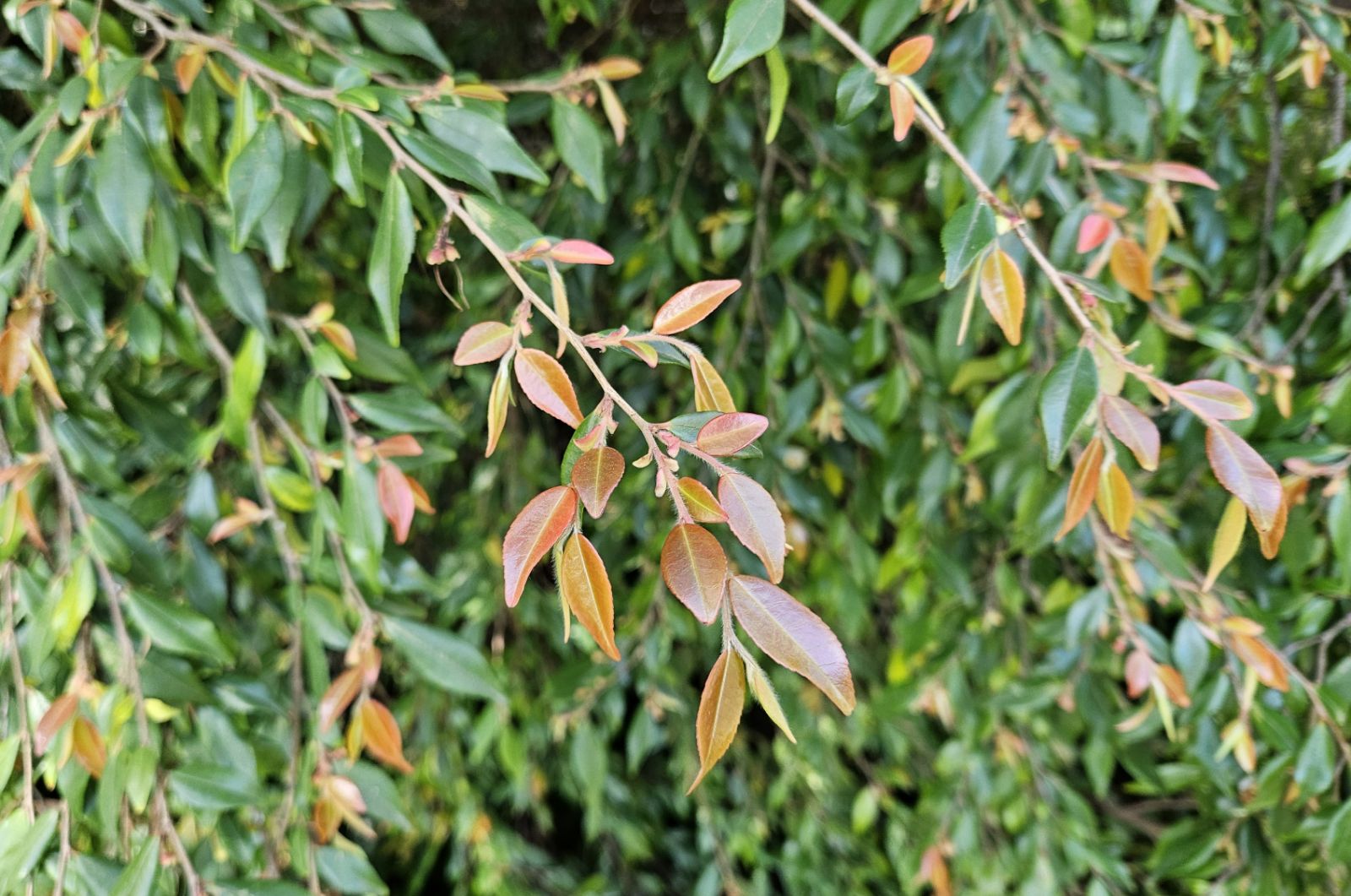Camellia lutchuensis
Credits
Article from New Trees by John Grimshaw & Ross Bayton
Recommended citation
'Camellia lutchuensis' from the website Trees and Shrubs Online (treesandshrubsonline.
Genus
Synonyms
- C. transnokoensis Hayata
Other taxa in genus
- Camellia brevistyla
- Camellia caudata
- Camellia chekiangoleosa
- Camellia chrysantha
- Camellia costei
- Camellia crapnelliana
- Camellia cuspidata
- Camellia drupifera
- Camellia edithae
- Camellia forrestii
- Camellia furfuracea
- Camellia granthamiana
- Camellia japonica
- Camellia kissii
- Camellia maliflora
- Camellia oleifera
- Camellia ptilophylla
- Camellia reticulata
- Camellia saluenensis
- Camellia sasanqua
- Camellia sinensis
- Camellia taliensis
- Camellia tsaii
- Camellia × vernalis
- Camellia × williamsii
- Camellia yunnanensis
Shrub or tree 2–3(–6) m. Branchlets greyish brown with spreading pubescence, which lasts up to three years. Leaves thin and leathery, 2.5–4.5 × 1–1.8 cm, oblong to elliptic, upper surface bright green and sparsely pubescent along the midrib, lower surface pale green and sparsely pubescent along the midrib, six to eight secondary veins on each side of the midrib, margins minutely serrate, apex bluntly acute to acuminate; petiole 0.1–0.3 cm long, pubescent. Flowers subterminal, solitary, fragrant; pedicel 0.1–0.25 cm long. Bracteoles four to eight, 0.05–0.2 cm long, glabrous; sepals five, ovate to lanceolate, glabrous; petals five to six, white, obovate, 1–1.5 cm long, apex emarginate; stamens numerous, (0.5–)1–1.2 cm long. Capsule subglobose, ~1 cm diameter, usually with a single seed. Flowering January to March, fruiting September to October (China). Ming & Bartholomew 2007. Distribution CHINA: southern Guangxi, Hong Kong; JAPAN: Ryukyu Is.; TAIWAN. Habitat Forests and thickets, between (< 100–)400 and 1300(–2400) m asl. USDA Hardi ness Zone 7b. Conservation status Not evaluated. Illustration Trehane 2007; NT195. Cross-reference S137. Taxonomic note Camellia lutchuensis var. minutiflora (Hung T. Chang) T.L. Ming has lanceolate leaves, and small flowers with four to five bracteoles and petals 0.6–0.8 cm long. Typical C. lutchuensis occurs in Japan and Taiwan, while var. minutiflora occurs in Guangxi and Hong Kong.
As traditionally understood, Camellia lutchuensis occurs in the Ryukyu Islands of Japan, and is a small tree producing masses of pure white, fragrant flowers (Gao et al. 2005). As such it is a very desirable breeding plant, because although it is itself rather tender and its flowers are small, their abundance and fragrance are passed to the next generation while the hardiness of the other parent (especially C. japonica) is also inherited by the offspring (Gao et al. 2005). The inclusion in C. lutchuensis of the Taiwanese C. transnokoensis Hayata, and the mainland Chinese C. minutiflora Hung T. Chang (as C. lutchuensis var. minutiflora (Hung T. Chang) T.L. Ming) blurs this picture, but all are beautiful shrubs or small trees for the garden. Trehane (2007) recognises them all as distinct species. They have red tips on the outer petals, and although quite small the flowers are very fragrant, making these appealing garden plants. Generally considered tender and suitable only for the mildest locations in the United Kingdom (Trehane Nursery 2007), C. transnokoensis is nevertheless proving reasonably hardy in Zone 7b conditions in North Carolina (Camellia Forest Nursery 2007–2008). All taxa have attractive elegant leaves and growth habits.


